Adding to our knowledge bank of iconic road cars, we drive a comparatively modern 1988-9 classic with unique features, a strict 2-seater that was never meant to make even limited production. Yet Z1 paved the way for a line of BMW Z cars…
WebMeister Peter Osborne and I have both driven BMW’s quirky ‘drop Z-doors’ Z1 and enjoyed the experiences, even though the first occasion was mostly in a very wet Britain.
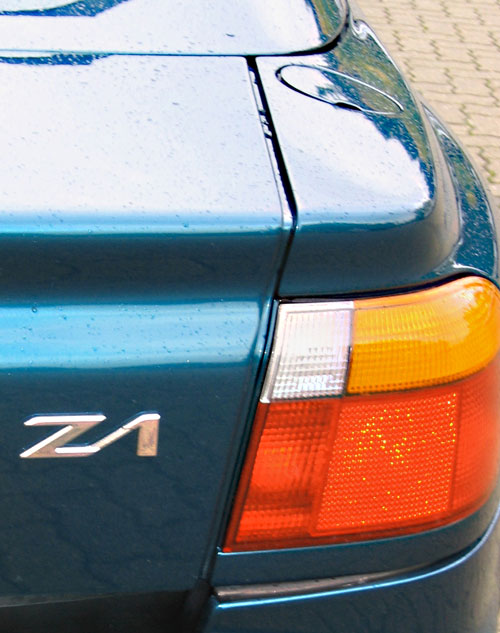
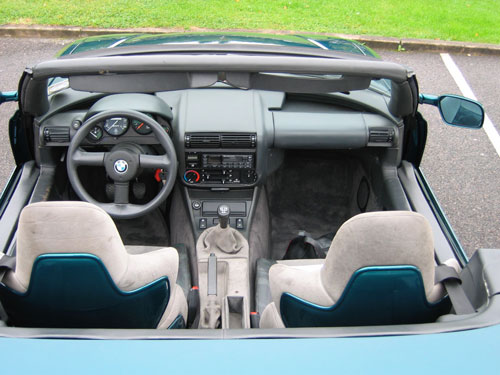
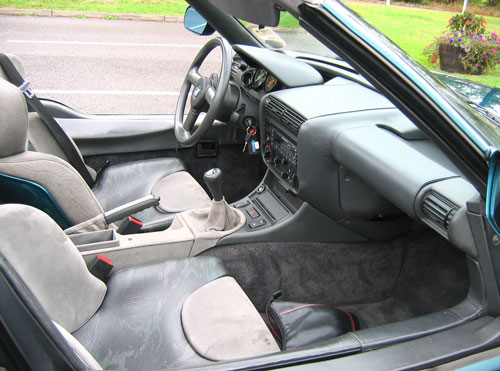
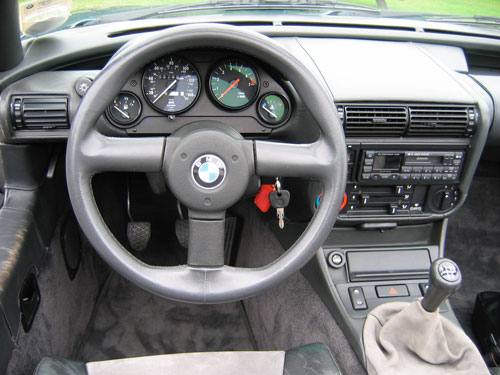
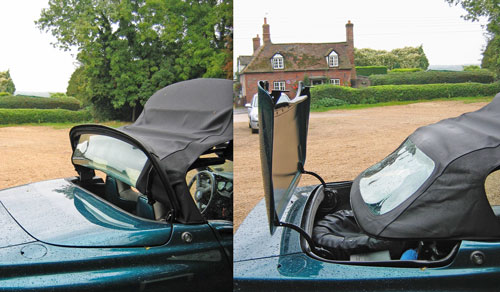
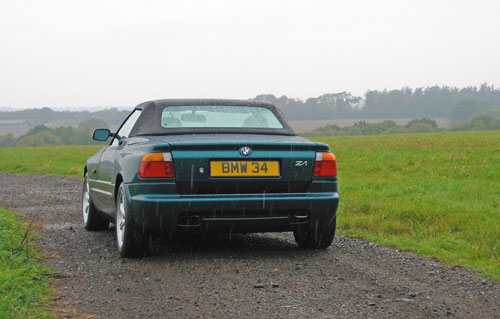
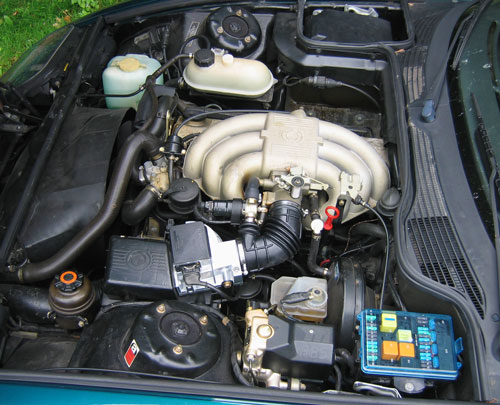
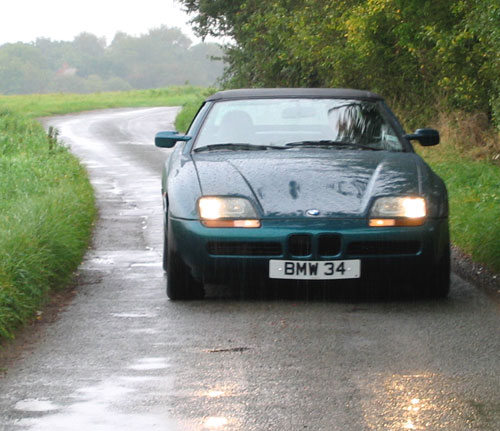
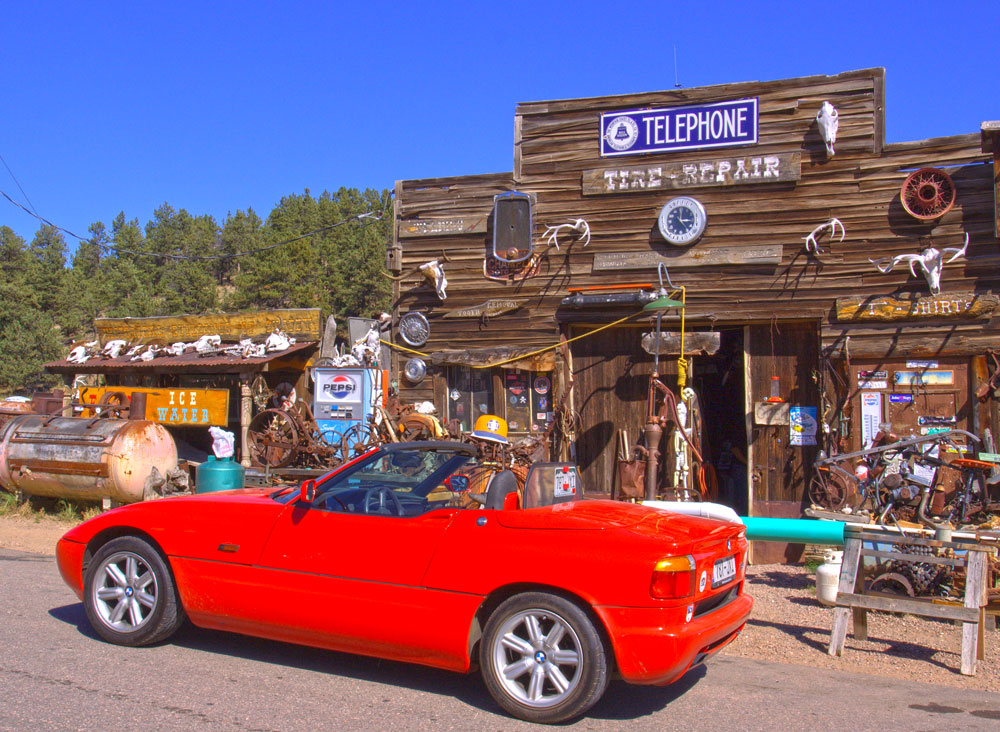
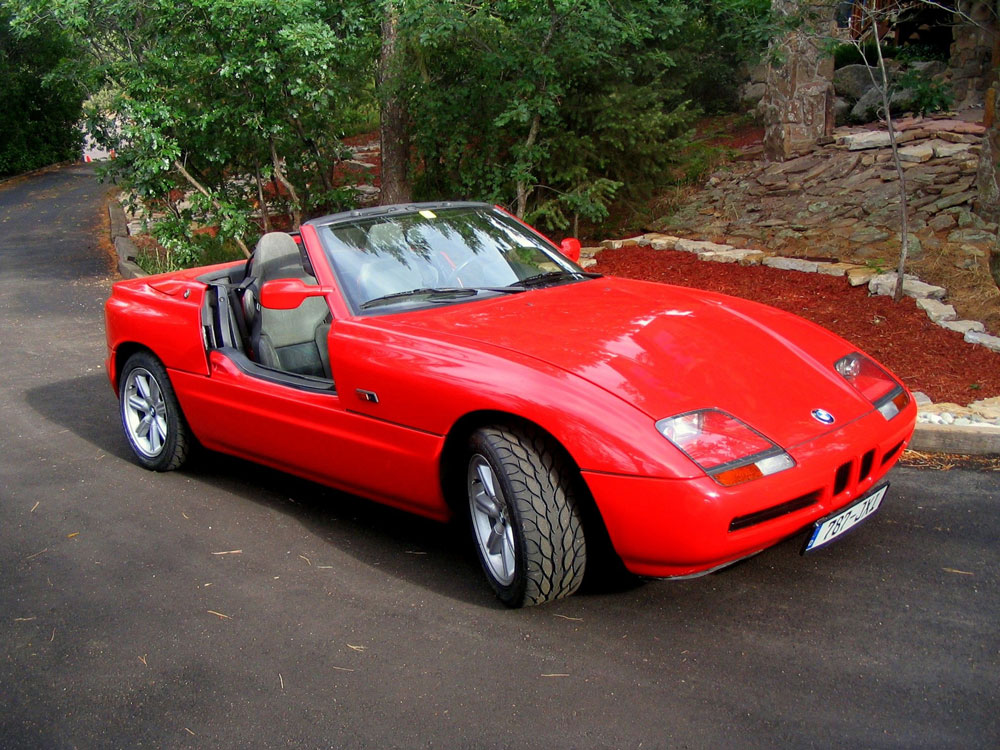
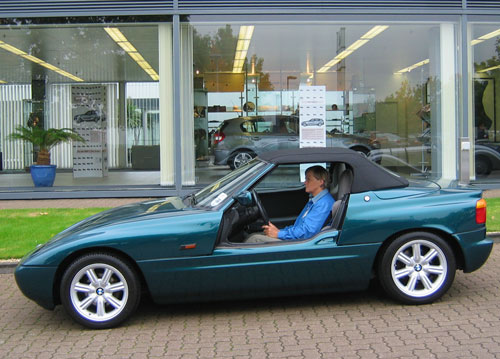
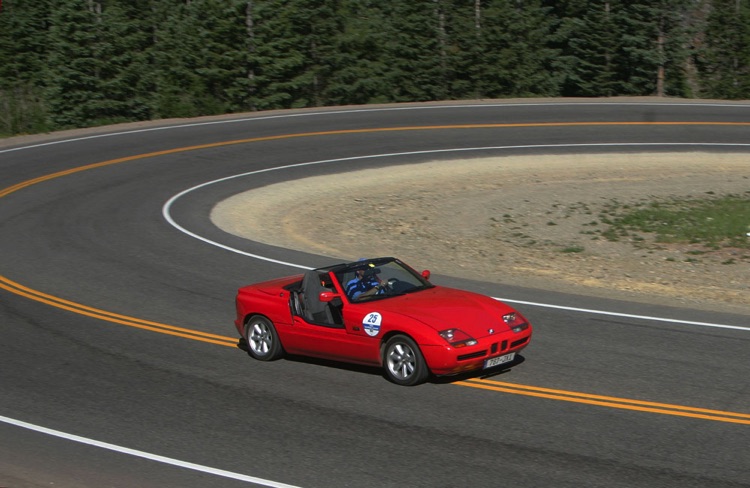
SO MUCH BETTER THAN Z-REST
Lots of bendy mileage like this in Colorado emphasised the Z1’s fine handling and ride.
Fortunately a privately owned Z1 was the iconic BMW I covered most American miles in, adding over 700 in Colorado state through a memorable golden fall. The wonderful USA weather had the effect of abbreviating the Aspen grove displays of glittering gold, just an occasional splash of red to add a conventional Fall shade.
All the major US BMW collectors I visited had one example of Z1, which shows you how it is appreciated over all the later Zeds, especially the small capacity Z3, a 2-litre example of which I bought for £1,000 in 2018. I remain convinced that Z1 was the best blend of sophistication, versatility and fun. A recipe featuring those unique drop-down doors, cowled headlamps, advanced style and capable chassis that BMW created in the Z-line to date.
That first Z-BMW was never equipped with convincing power, the 2.5 litres of ex-BMW 325i notably lean on torque. Yet the late Bill Young had also fixed that in his very special 2.7 litre limited edition, as did many other German and American owners using Alpina or Schnitzer sources. The privately owned Rick Meinig example I used so greedily was an authentic 74,000 kilometre (45,954 miles) example of the showroom 2.5-litre/170hp machine. Originally delivered from Niederlassung, daddy of all BMW dealers in one of Munich’s main thoroughfares, the red delight was a 1991 model. That last year of production saw output since 1988 recorded as a precise 8000 units (so tidy these Teutons!) in factory records.
Z1 was not only the first 2-seat Z from any BMW division, but was Technik GmbH’s initial research programme when this secretive advanced research unit was established in 1985: Technik employed around 100 technocrats in 1988. For the public, Z1 debuted as a Frankfurt show and technology star turn, was never resolved for mass production and a simpler version would have been a more profitable, big number, run. I’m glad they did not change it.
The complex drop down doors are absolutely brilliant for hotter climates, and I cannot imagine a better beach n’boulevard mount for California, the Mediterranean seaboard, some Australian coastal stretches, or Florida. I was slightly surprised that the drop doors still whirred faultlessly at 19 years of age, and the fuel station audiences for each fill up and door-dropping performance were often convinced it was a brand new model.
A typical Colorado fuel station conversation in the States went like this – Younger BMW Owner: “Hey is that the new BMW convertible?”
“You think it looks good enough to buy?” I countered.
“Oh yeah, that’s really neat. So cool looking, love that front end.” was the immediate response
Owner Meinig: “Sorry, it’s not a new model, it’s actually a ’91.”
“No way. It looks just so…so, now. And those doors, wow!” was the verdict from disappointed (younger) BMW owner.
It was not just Americans who were impressed. When he drove the 28,000 mile, BMW UK-owned Z1 a 40-year friend and fromthedrivingseat owner Peter Osborne—a total BMW cynic—commented: “I instantly felt at home, although it took ages to find the mirror adjustment. All the important controls fall readily to hand, it’s light, responsive, handles beautifully. Z1 even has trick doors that you can lower as you are driving along – how cool is that! Well, bloody cold when I drove it in UK actually so I shut them up again. It is fun to drive and it is the best-looking BMW ever. I love it.”
Having agreement that the Z1 was a cool ultimate from both sides of the Atlantic, let’s just have a look at how such a bold BMW appeared.
BMW’s secret squirrel zone at Forschung und Technik GmbH, was never intended to create a production vehicle, but expected to serve as a hothouse for future engineering technologies. Later Chief Executive for the rebirth of Aston Martin, former Porsche executive Dr. Ulrich Betz led the Z1 Technik team from 1985 onward. Intended as a show machine for BMW advanced engineering possibilities and displayed at the 1987 Frankfurt Show, the striking Z1 was sensation that attracted thousands of speculative and realistic orders. Leaked quietly to selected media a year earlier, then influential BMW executive Wolfgang Reitzle commented: “It embodies the qualities of a BMW directly and unmistakably. It might not be the most sensible car, but it’s great fun.”
Z1’s abbreviated three-year development period yielded a formidably useable daily sports drive. The deeply conservative British magazine Motor Sport was moved to report: ‘In its design and execution the little Z1 is a gem: its exciting styling is likely to form a keynote for other studios; its driving qualities are superb; its unique doors offer a unique driving experience.’
Today, the first Z-car is a better investment/pleasure drive proposition for BMW collectors and enthusiasts than subsequent mass production Z3 and Z4s with the possible exception of the misshapen but loveable Z3M Coupé.
Throughout its 4-year production life Z1 drew on a straight 6-cylinder 12-valve motor of 12-valve cylinder head layout from the eighties: ultra smooth, but had to be worked to release the power potential. Associated with this 3 Series refugee were a simple 5-speed manual powertrain, plus some ex-3 series suspension components, past and future.
Despite wide use of major production hardware, manufacturing this show and publicity Zed in volume was remarkable, for its construction was not intended for mass production. The hull was weighty steel monocoque, the side panels and doors came from General Electrics and their Xenoy thermoplastics technologies, while bonnet and boot panels were of glass fibre: the steel chassis could be run without any of the (slowly) removable and replaceable panels.
Wow factor doors were—and remain—unique, rapidly powered vertically by electric motors via toothed belts. Jaws do drop as they disappear out of sight.
Another clever—and prophetic—body feature was the use of a flat–faced undertray. The exhaust system and associated rear shrouds were also designed from the outset to balance aerodynamic slipperiness and cut lift. The aero drag factor was good for a short vehicle at a quoted 0.36 Cd roof raised, over the 1980s benchmark of 0.40 Cd once the power roof was dropped. Safety conscious, but not so clever for skirted females who otherwise love this BMW, are the high and wide sills. They contain the doors neatly, but are obstructive to elegant entries and departures
A very compact 2-seat sports design on a 96-inch wheelbase, curb weight was not so clever. At 2756 lbs/1250 kg it was in the same bracket as the E30 325i 2-door from which it derived its motor and transmission. Significantly, Z1 was approximately 220 lbs/100 kg lighter than a steel-bodied Z3M roadster. However, Z3 packed another 151 ponies in its squat 1998 outline, so Z1 could never be a similar tyre-melting dragster.
Performance was decent—officially rated at 140 mph max and 0-62 mph in 8 seconds. Such stats are totally reliant on keeping the motor working between peak torque (161 lb ft) at 4300 rpm and redline revs of 6250rpm. More on that easy revving pleasure, later.
The headline dynamic asset was a Z-axle independent rear layout, first deployed at the rear of 8 Series, and then at much larger volumes it predicted streamlined E36 3 Series rear suspension. The later rear axle and suspension layout offered totally superior traction and axle control to BMW’s earlier semi-trailing arms designs. All assisted by the rearward bias of Z1’s front engine, which is tilted over at a 20 degree slant that assists the centre of gravity. Weight distribution was given as a well balanced 49 front, 51 per cent rear.
This is no tail-happy, traditional Old Skool BMW; but a finely balanced cornering companion that Lotus would have been proud to offer. However, the dead accurate steering was not as delicately informative as the best from Lotus, or as chatty Munich’s beefier performers, such as early M3.
The strut front suspension was conventional MacPherson as developed for contemporary 3 Series, as was the rack and pinion power steering, but none the worse for that. There was the sophistication of ABS anti-lock braking—not a common feature in compact contemporary sports cars—and the shock to British traditionalists of a folding hood that neither flapped nor leaked, neatly hidden away behind the seats under a body coloured flap that echoed the hideaway line of 3 Series.
Hood up, the Z1 was just another, noisier, saloon with constricted vision, but it unfurled and curled away with precision for the fun miles: I never did raise the roof in the USA as the large windscreen and anything over 20 mph are enough to deflect showers.
We tested UK and US examples of the Z1 breed on production Michelins and BF Goodrich respectively, both featuring the standard 225/45 ZR16 sizes on 7-inch rims. At debut BMW claimed a worthy 1G cornering capability on such wheel and tyre combinations.
Both borrowed Z1s ran through wet conditions, but the British Z1 faced the traditional UK downpours at speed on testing twisties. It proved right in the Lotus class for traction and agility, although the steering is slightly remote. The gear change can hang up obstructively to marginally interfere with the fun quota under duress.
Cockpit controls are familiar to later model BMW drivers and neat instruments are the clearest BMW have delivered on a smaller scale dash. But first you must enter...Yes, that is via the obvious key hole, but no so intuitive is the combination of push and turn-key you need to drop the door and step across a sill that is almost as broadly obstructive as a Lotus Elise. Those doors can be raised and lowered on the internal handles. The electric windows have separate, conventional, controls while the lights are activated via a chunky barrel switch.
Those broad sills and that door mechanism prompted the only cockpit wrinkles on either side of the Atlantic for Z1. For the leather-trimmed sills on the driver’s side were scuffed, scheduled for refurbishment in UK and cheerfully scarred, but not torn, in the USA example.
Although both British and US Z1s had left hand steering—like the first M3 there was no right drive option for the UK and Japan—their neat quartet of dials, deliberately styled to echo those of BMW motorcycles, differed. The Brit car featured a 140 mph speedometer, but the Meinig exported Zed featured the original continental mainland markings for a 240 kph max. A 7000rpm tachometer is redlined conservatively at 6250 revs and is the only instrument with a red (M-style) needle: smaller dials are simply scaled without numerals to cover water temperature and fuel tank.
Compared with its original styling and features, the overall impression of Z1’s interior is conventional BMW, featuring many of their heavy-duty black plastics for trim and fascia/ventilation grilles. The unique features cover patterned jazzy leather and suedette seat covers, highlighted D-shaped inserts on their squabs, those seats encircled by body-coloured clamshells. Also created for Z1 was a slim non-airbag, 3-spoke, steering wheel that is functional and more attractive than today’s fat airbag wheels, albeit not so protective.
The Z1 motor fired from a Coloradan ski resort’s nippy September night promptly, settling to an even tickover swiftly. This inline six has more accessible pulling power than the subsequent 24-valve for later 3 Series, but is still smooth, rather than responsive, below 3500rpm.The motor note is more assertive than a contemporary 325i, but never remotely loud: in fact you don’t get much encouragement in the aural department until you nail the throttle beyond 5000rpm.
The Z1’s superb cornering capabilities and traction overcame its significant horsepower and acceleration deficits. I respected the way the red road runner hauled up 11,000 foot passes, water temp stayed steady and accelerator pedal hugging the floor as the deft steering pointed us around curves from 20 to 65 mph. Tidy handling and excellent traction out of slower corners closed any straight-line deficits to more powerful vehicles, so long as the Z1 motor ran within 4000 to 6500 rpm.
Dynamics of this 20-year old, outside an unremarkable 5-speed gearshift linkage for a proven Getrag gearbox, are of front line excellence. It displayed a much better ride than a Z3 and outstanding grip. Qualities that are preserved even when the UK weather turned foul and leafy lanes were covered in associated slime. I believe Z1’s absorbent ride quality is unmatched by Z3 or Z4 mainstream BMW 2-seaters. Those slim but shapely Z1 seats do an outstanding job of holding you for an overall comfort rating that remains even under committed cornering conditions.
The servo-assisted 4-wheel disc brakes did everything I asked of them in Britain or America, ABS graduated to only interfere at high pedal loads or hazardous surfaces. The brake pedal could—as with the steering—display more sensitivity in its feedback, but the braking is as consistent as in many later BMWs.
Out of the curves and onto the straights, Z1 settles around 85 mph and less than 4000rpm in fifth. Driven that way, with those higher rpm in the mountains, I returned less than 20 US mpg. In Britain the counterpart figure was 22-24 mpg Imperial, equivalent to 18.3-20 US mpg: the factory gave 22 Imperial as the worst official (Urban cycle) figure in Europe.
Windows raised, a 50-90 mph pace with the roof down was sustainable for hours with little stress and much pleasure. Doors dropped, I confined my experience to sub-40mph exploration. Wonderful breezes when it’s 90 degrees F, or more. Only equalled by Lotus 7 and clones with the side screens removed, or a Beach Buggy.
For me the Z1 was one of the best BMW chassis ever retailed. Not so racy as the first M3s, but I enjoyed the superior ride quality and working Z1 hard through curves. In the twisties, the Z1 is a class above Z3 and (to a lesser extent) Z4, but the latter had the subsequent compensation of twin turbo power in the effective 335i Sdrive edition that delivered different driving pleasures.
I would gladly own a Z1 alongside my current Audi TT, for it is an enjoyable everyday and special drive choice – one that can only carry on appreciating.
Jeremy Walton
